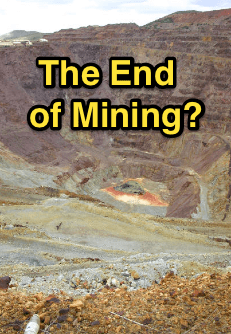Question: Why would you invest in something that you can’t spell, don’t understand and is obsolete in 18 – 24 months?
Rick Rule, the opening speaker at the Gold Symposium in Sydney last week, realized that he could see no good reason to. So this realization many years ago led him to avoid looking at technology companies to invest in. But instead to focus on commodities which will always be needed and don’t have a half life of 18-24 months. i.e. someone comes along and invents something better that makes the product obsolete.
A major point he made when it comes to commodities (and gold and silver) cyclicality and volatility in these markets are not risks – but rather they are tools to use to your advantage to make money.
Rick was entertaining and informative and focused largely on the psychology of investing. Stating that “The biggest risk is 2 inches to right of your left ear and 2 inches to the left of your right ear!” i.e. It’s in your head.
So here’s our synposis of what he covered in his presentation…
He looked back to the 1970’s resources bull market and used copper as an example to parallel to what is going on today.
Copper began this market at 30c /lb and ended up at $1.60 /lb.
At the bottom of the market copper had lots of utility to fabricators. It was cheap so had all manner of uses.
As the price goes up the outlook to copper investors goes up as well and this is the trap as utility actually falls. Because as the price rises substitution occurs as users and fabricators of copper look to cheaper alternatives.
Whereas at the bottom of a market utility to fabricators is very high but the outlook to copper investors appears to be very poor – which is not the case.
They say the bell never rings at the top of a bull market but actually it does. You just have to know what to listen for!
For example, at $1.55 the average investor says copper is fantastic and can’t do any better! So what does it do if it can’t get any better?
It gets worse!
Then at 62c, four years later they say to sell it even though now the utility of copper is again actually very high and means this is a great time to be buying!
Take the 1984 Newsweek cover as an example. Emblazoned with:
“The End of Mining”
How silly! As the end of mining means the end of cars, fridges and air conditioners and that’s just not going to happen.
Now look at recent resources history.
The narrative that existed in 2009-2010, when the commodity supercycle was the currency of all financial thinking, is unchanged. The first part of that narrative was founded on the idea that world population growth was taking commodity consumption higher. World population growth is not over.
The second part of the narrative was that as poor people gained more freedom, they got richer and consumed more. Political liberalization in emerging frontier markets has continued, and people are wealthier and are consuming more.
A third part of the narrative was that Western consumers had lived beyond their means and as a consequence were debasing the denominators, the fiat currencies. If you debase the denominator, the nominal value of stuff would go up. We have not stopped debasing the denominator.
The entire narrative associated with the resource-industry bull market is intact. Nothing has changed except the price. A cyclical decline in a secular bull market is a different way of describing a spectacular sale, for people who understand that the narrative hasn’t changed.
In 2009 and 2010 it was popular to say:
- Resources will do well due to population growth meaning higher commodity consumption.
- But not only is the population growing but they are getting wealthier. So these new “wealthy” will eat better. What else do you do when you make more money? You buy more stuff!
- Thirdly was the idea that the western world had lived beyond their means and so were debasing their currencies or what Rule called the denominator. If you reduce the denominator the nominal value of the goods would go up.
Have any of these narratives changed?
Absolutely not.
Looking at it from the other side now.
Has US debt gone down since 2009/2010?
No, it now stands at $17 Trillion. Rule asked us all to write that down – it’s with 12 zeros. Quite a big number!
But off balance sheet liabilities are the real problem such as Social Security and healthcare.
These off balance sheet liabilities total $65 trillion!
So what has changed between 2009/2010 and 2013?
Has the narrative altered? It doesn’t appear to have gotten any better to him.
Take Japan. They have decided to double their balance sheet in the next 2 years. They intend to “manage” their currency and devalue the Yen to improve their exports. Really this means they will nationalise their workers wages.
Of course this will be to the detriment of their competitors such as Korea and Taiwan.
Will this move go unanswered by Korea and Taiwan? No.
Then will their counter move go unanswered by the rest of the world? No.
Will the USA stop QE (a.k.a. counterfeiting)?

At a federal level the USA spends $1.2 trillion more a year than it takes in.
So the question he said needs to asked:
“How can you taper if you don’t stop spending?”
So the narrative in the resources bull market in 2009/2010 is unchanged now. The only change is the price level.
A cyclical decline in a secular bull market is simply a different way of describing a spectacular sale, for people who understand that the narrative hasn’t changed.
A couple of possible reasons for this change in price level he reckons are:
- Expectations for the future are set by our immediate past (i.e. just the last few months)
- Also we tend to believe what is comfortable. And it’s comfortable to believe that things are improving and returning to normal.
So it would seem that there is no need for gold according to what we’ve seen in our immediate past.
So there exists a disconnect between the narrative and the price level.
George Soros outlined how he has made his money by “finding a widely held precept and betting against it”.

Rule then gave the analogy of walking through the downtown Sydney Westfield Mall. On one side of the mall is a garish flashing neon sign for “Bear Market Merchants” saying “Bear Market Merchants ll goods on sale 50% off. Some 70% off, No Reasonable Offer Refused, Come Back Tomorrow—Prices May Be Lower.”
Meanwhile on the other side of the Mall is located “Bull Market Merchants” with a tiny sign saying “Bespoke Bear Market Merchants, No Deals Ever, High Margin for Merchants, Don’t Even Think About Asking for a Deal, Prices May Be Higher Next Week.”
If you’re wanting to buy a pair of shoes, which store would you go to? It really is a no-brainer when we’re buying physical goods.
However when we buy financial goods, we seem to want to pay full price (or even higher than full price!), even though it’s completely irrational.
What we need to do if we want to make money…
is buy from the Bear Market Merchants. Just like we would goods on sale from a retail store. Buy when commodities and companies are on sale, not when they are full price.
So even though times might be tough in the gold and resources sectors currently, just like in 1984 we aren’t going to have the end of:
- Mining
- Resources, or
- Food
Many commodities are selling for below the cost of production, so the price will have to rise eventually.
Take uranium for example, where the spot price is $36 /lb. It costs $70 /lb and companies are trying to make up for it on volume which just can’t continue.
He finished up by saying if you’ve been a holder of commodities and commodity miners, “You’ve been through the pain. It might be worth hanging around for the gain”.
And then his by now widely known line:
“You’re either a contrarian or a victim.”


Pingback: Gold Market Prognostications from PAMP’s Head of Sales | Gold Prices | Gold Investing Guide
Pingback: NZ “Rock Star” Economy Already Priced into NZD? | Gold Prices | Gold Investing Guide
Pingback: Gold Survival Guide Demo – Jeff Berwick, The Dollar Vigilante: The End Of The Monetary System As We Know It
Pingback: Why the Resource Supercycle Is Still Intact | Gold Prices | Gold Investing Guide